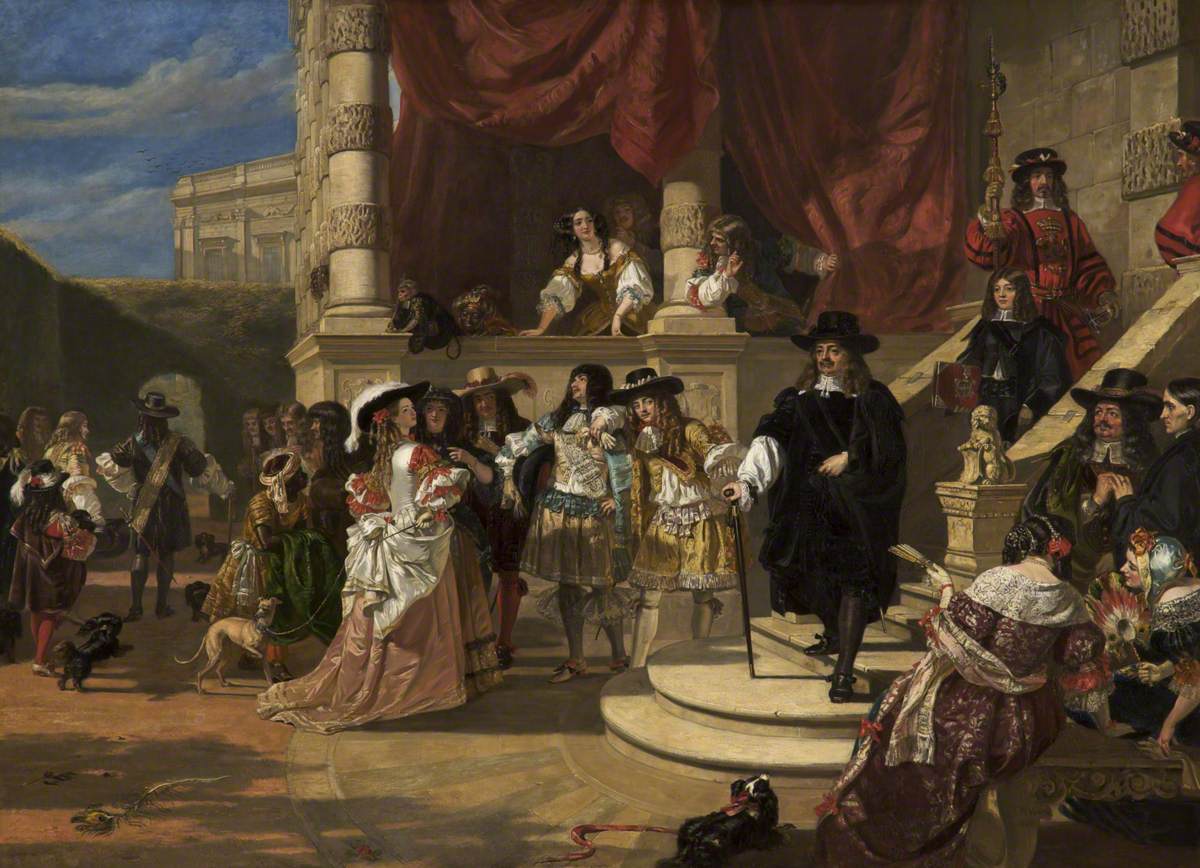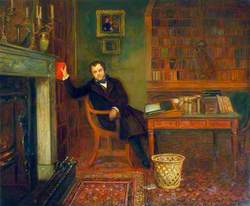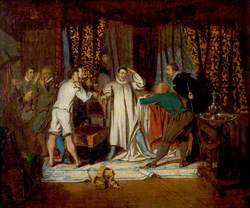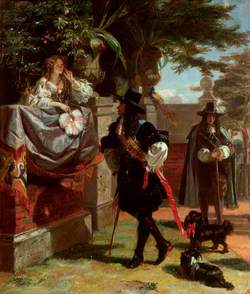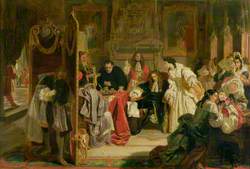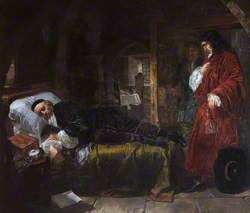How you can use this image
This image is available to be shared and re-used under the terms of the Creative Commons Attribution-NonCommercial-NoDerivatives licence (CC BY-NC-ND).
You can reproduce this image for non-commercial purposes and you are not able to change or modify it in any way.
Wherever you reproduce the image you must attribute the original creators (acknowledge the original artist(s) and the person/organisation that took the photograph of the work) and any other rights holders.
Review our guidance pages which explain how you can reuse images, how to credit an image and how to find more images in the public domain or with a Creative Commons licence available.
DownloadNotes
Add or edit a note on this artwork that only you can see. You can find notes again by going to the ‘Notes’ section of your account.
This painting shows an important historical event, which is well documented by a number of sources. It illustrates fairly closely the passage from The Life of Clarendon quoted in the Art Journal by the critic who reviewed the annual exhibition at the Royal Academy in 1846 where it was first exhibited. 'After two hours discourse the King rose without saying anything, but appeared not well pleased with all that had been said, and the Duke of York found he was offended with the last part of his discourse. The garden, that used to be private, had now many in it to observe the countenance of the King when he came out of the room; and when the Chancellor returned, the Lady (Castlemaine), the Lord Arlington, and Mr. May, looked together out of her balcony with gaiety and triumph, which all the people observed.
The painting straddles the indistinct line between literary and historical narrative. We see a back view of King Charles II on the left as he walks away having dismissed his Chancellor, Edward Hyde, Earl of Clarendon. The Chancellor was blamed for having failed to negotiate favourable peace terms after the war with the Netherlands and there was an attempt to impeach him for high treason. He had to flee to France. Ward concentrates on showing us the reaction of the Court to Clarendon’s dismissal and has taken great trouble to include recognisable figures. The scene is lacking the tension that a significant historical event should perhaps possess.
Title
The Fall of Clarendon
Date
1846
Medium
oil on canvas
Measurements
H 134 x W 186 cm
Accession number
0191:1901
Acquisition method
acquired as part of the Wrigley Gift
Work type
Painting
